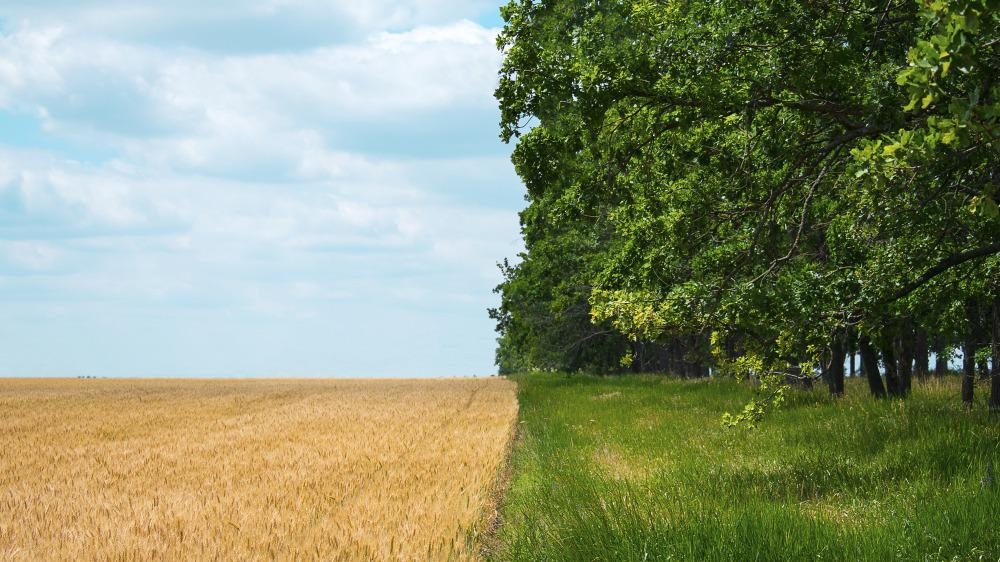
Image Credit: Iryna Imago/Shutterstock.com
Our planet is in the middle of a climate crisis; the cause is anthropogenic carbon dioxide, the potent greenhouse gas released when fossil fuels are burned for electricity generation, industry, and transportation. The agricultural sector is also a significant contributor and, together with forestry and other land use, it is responsible for around 25% of all human-created greenhouse gas emissions.
As the global population rises, how land is used will continue to change. More forests will be felled to make way for farming and livestock, and emissions of powerful greenhouse gases released through our current agricultural practices will rise.
A recent study found that unless farming methods change, rising emissions from human land use will jeopardize the aims of the Paris Climate Agreement. Poorer countries (Latin America, Southeast Asia, sub-Saharan Africa) have had the greatest increase in land-use change emissions due to population expansion; developed nations (Europe, North America) had negative land-use change, but still extensive farm-originated pollution.
Regenerative Agriculture as a Solution to Land-Used Emissions
Adopting alternative farming methods could have a dramatic effect on land-used emissions, improve overall soil health and avoid the clearing of carbon-rich forests for crop cultivation. One such method is regenerative agriculture, championed as part of Earth Day 2021. The holistic approach aims to improve the resources it uses, rather than destroying or depleting them.
This conservation and rehabilitation approach is considered one of the most effective ways for farmers to reverse climate change and promote food security by:
- Rebuilding organic carbon
- Regenerating topsoil and strengthening its health and vitality
- Increasing biodiversity
- Supporting biosequestration
- Improving the water cycle
- Increasing resistance to climate change
How regenerative farming can help heal the planet and human health | Charles Massy | TEDxCanberra
Video Credit: TEDx Talks/YouTube.com
The Benefits of Regenerative Farming
Plants absorb carbon dioxide during photosynthesis and convert it into carbohydrates, which they use to grow leaves, stems, and roots. Any excess is sequestered in surrounding soil and feeds microbes and fungi, providing nutrients for the plant. This soil organic carbon is the main component of soil organic matter and offers structure to the soil.
This carbon can remain stored in the soil for thousands of years but is quickly released into the atmosphere by current farming methods such as plowing or tillage – a means of mechanically agitating the soil. This leads to bare, compacted soil that is hostile to soil microbes. Low or no-tillage practices minimize soil disruption and increase levels of soil organic matter, meaning healthier and more resilient soil.
Soil health can also be improved by increasing plant diversity. Different plants release different carbohydrates into the soil via their roots; microbes feeding on them release nutrients to the soil and the plants. Greater diversity leads to rich and varied nutrient-filled soils and better crop yields.
Diversity goes hand-in-hand with crop rotation and cover crops. If the same crop is grown in the same field year after year, some nutrients become severely depleted, while others begin to build up – rotating crops prevents this and helps replenish soil nutrients.
Farmers can also plant crops to simply cover the soil rather than leaving it bare. These cover crops protect the soil from erosion or being washed away, and permeate it with nutrients and increase soil organic matter.
Other practices farmers can adopt include recycling farm waste and adding composted material from sources outside the farm to their fields.
Future promising technological solutions include alternative ways of cultivating rice to generate less methane and dietary supplements for livestock that decrease harmful emissions by up to 95%.
The Future of Regenerative Farming and the Climate
The health and vitality of the soil in which crops are grown are integral to food production; poor soil means poor crop yields. Climate change represents a serious threat. Temperature changes have affected how and where things grown, disrupted the water cycle, shifted rain patterns and evaporation, and caused more storms and severe droughts.
Regenerative agriculture offers farmers the chance to play an active role in mitigating the threat to their livelihoods. It is also one of the most effective ways to reverse climate change and encourage food security by rebuilding organic carbon, restoring soil, increasing biodiversity, and reducing atmospheric carbon.
References and Further Reading
Colarusso, S. (2021), Reducing Farming Emissions With Regenerative Agriculture, EarthDay.org, https://www.earthday.org/reducing-farming-emissions-with-regenerative-agriculture/. Accessed 9 April 2021.
Bell, B. (2021), Farming emissions are threatening the Paris Agreement. Here’s why, World Economic Forum, https://www.weforum.org/agenda/2021/02/global-farming-emissions-threaten-paris-agreement-goals/. Accessed 9 April 2021.
EarthDay.org, Food Doesn’t Grow On Its Own, EarthDay.org, https://www.earthday.org/campaign/regenerative-agriculture/. Accessed 9 April 2021.
The Climate Reality Project, (2019), What Is Regenerative Agriculture? The Climate Reality Project, https://www.climaterealityproject.org/blog/what-regenerative-agriculture. Accessed 9 April 2021.
Disclaimer: The views expressed here are those of the author expressed in their private capacity and do not necessarily represent the views of AZoM.com Limited T/A AZoNetwork the owner and operator of this website. This disclaimer forms part of the Terms and conditions of use of this website.